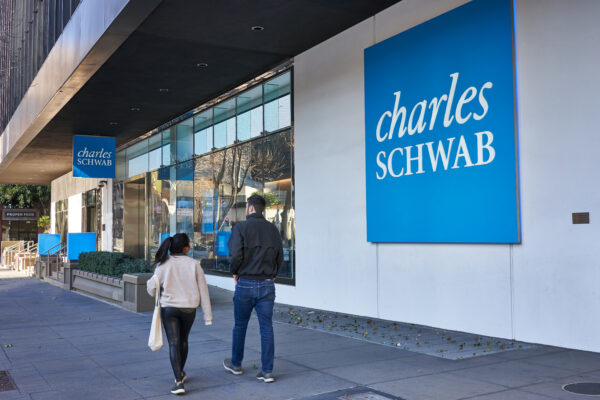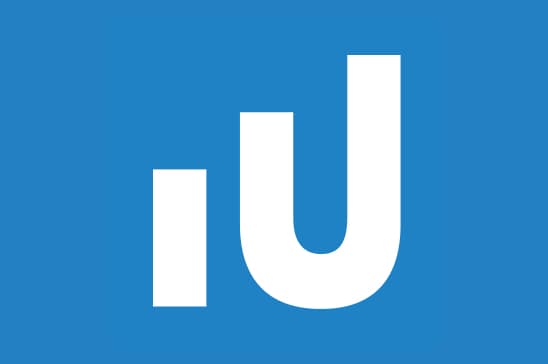The Best Passive Income Stocks
Buy low, sell high. That’s the goal for most investors. But that adage ignores an important strategy. For example, Warren Buffett’s goal is to buy and hold forever. And he grows his wealth by holding passive income stocks.

So what are passive income stocks? They’re publicly traded shares of companies that pay dividends to shareholders. And the dividends are a prime source of passive income. After buying shares, it takes no work to earn those payments.
Unlike traders who buy and sell shares to turn a profit, investors in dividend-paying stocks will continue to see steady returns (if the company continues to pay dividends, of course).
Regardless of share price movements, shareholders will receive a steady flow of passive income. It’s like Ron Popeil said, you can just set it and forget it… and let the cash flow in.
Skip the nervous scrutinizing of what the greater markets are doing. There’s no need to constantly check your brokerage account to see how your portfolio is doing. If you invest in sound companies with a good dividend track record, share price swings don’t matter as much. And in this era of market volatility, that peace of mind will be beneficial to your nerves and your bank account.
Now, when it comes to dividend-paying stocks, not all are created equal. Before picking a dividend stock, it’s important to look at a couple of key pieces of information…
What to Look for in Passive Income Stocks
The first detail is the dividend yield. This is displayed in the form of a percentage. Let’s say a company is trading at $100 per share with a dividend yield of 4.85%. It will pay out $4.85 per share for the year. And often, companies break it down into quarterly payments. With this example, it’d be $1.21 per quarter.
Now, before you start to hunt for companies with the highest dividend yield, a word of caution. Just because a company is delivering a strong yield today doesn’t mean it’ll do so in the future. Analysis by Mellon Capital found that over the course of two decades, companies that offered a 10% dividend yield or higher actually only saw an estimated 3% yield.
And those who expected to get back a 9% yield? Well, they earned back only around 4%. To put it plainly, if it sounds too good to be true, it probably is.
That same research showed that investors would have been much better off with reasonable yields in the 6% to 7% range. On average, investors in that range actually saw more than a 5% yield.
But again, yield isn’t the only metric worth factoring into an investment. There are other important factors consider as well. A vital one is cash flow.
Follow the Money
For the most part, dividend-paying companies already have a large stream of steady cash flow. And because they can’t reinvest all that money with a reasonable rate of return, they reward it to investors.
Good industries for passive income stocks are energy and healthcare. Same goes for producers of essential consumer products. These are often household names like Exxon Mobil (NYSE: XOM), McDonald’s (NYSE: MCD) and Apple (Nasdaq: AAPL).
But there’s one more factor to check out before picking a passive income stock. And that’s its history.
When a company has a consistent history of paying out dividends, that can usually be a sign of things to come. Take the online commerce website eBay (Nasdaq: EBAY) for instance. It started delivering a modest $0.56 to investors in 2019. And that could go up in the future. But it could also go down or just go away altogether.
When it comes to passive income stocks, it’s best to look to the tried-and-true companies that have been doing this for a while. And nowhere is there a better example of this than the list of dividend aristocrats.
These are companies that have not only maintained dividend payouts for at least 25 years, but also increased them every year. And that’s why every passive income stock on our list of favorites is a dividend aristocrat.
Top Passive Income Stocks
- Aflac (NYSE: AFL)
You know this company from the annoying duck that screeches the company’s name in TV commercials. But this health and life insurance company also has a healthy 2.86% dividend yield. The company has been steadily increasing its dividend for years. And while many companies on this list can be pricey, the global pandemic has hit the stock price. It’s a better bargain for the time being. And even though near-term income prospects for Aflac are slightly down, the company’s low payout ratio suggests plenty of promise for the sustainability of its dividend.
- AbbVie (NYSE: ABBV)
Maybe you know this company and maybe you don’t. It’s the maker of the blockbuster drug Humira (almost $21 billion in global sales in 2021). Doctors are prescribing it to treat a range of health issues, like rheumatoid arthritis, Crohn’s disease and ulcerative colitis among others. While sales have been tempered slightly by competitors, the company’s lymphoma and hepatitis C treatment sales are growing. The company also boasts an impressive yield with a long history of dividend increases… making it a perfect passive income stock to start building wealth.
- Exxon Mobil (NYSE: XOM)
While being one of the most valuable companies in the world, this oil and gas giant has diversified over the years with upstream, midstream and downstream operations. And even though the company is subject to some of the whims of the energy markets, it’s cash-rich with billions of barrels of oil reserves on hand. This company also also a yield of more than 4% and nearly 40 years of annual dividend increases.
- Albemarle (NYSE: ALB)
You know those lithium-ion batteries that are all the rage in electric vehicles? Well, this company is one of the leading providers of lithium. And as electric cars grow in popularity, so too will Albemarle’s profits. This is one of the newest additions to the list of dividend aristocrats, having just made the cut in 2020. And the company’s yield is a modest 0.77%. But long-term investors can look forward to years of growth thanks to the diversity of materials it produces in the pharmaceutical, refining and consumer electronic markets. Which makes this a passive income stock with lots of potential in store.
- Consolidated Edison (NYSE: ED)
If history is your thing, it’s hard to find a stock with a more storied one than Consolidated Edison. The company was first listed on the NYSE under the name New York Gas Light way back in 1824. It changed its name to Consolidated Edison in 1936 but still holds the record for being the longest-listed stock on the exchange. It’s also an ideal passive income stock because it holds a government-granted monopoly. It’s the utility provider for some 3.4 million New York City residents. So as long as New York has people, Consolidated Edison will be making money. And it’s been rewarding shareholders with more than 45 consecutive years of annual dividend increases.
The Bottom Line
What you do with the money earned from passive income stocks is up to you. But a powerful strategy to boost your annual returns is using a dividend reinvestment plan (DRIP). If your investment strategy is for the long haul, this is a surefire way to boost your portfolio’s performance.
But keep in mind, passive income stocks aren’t the only way to earn passive income. And we’ve got plenty of other great passive income ideas that can boost your earning potential. Just click on that link to check ‘em out.
About Matthew Makowski
Matthew Makowski is a senior research analyst and writer at Investment U. He has been studying and writing about the markets for 20 years. Equally comfortable identifying value stocks as he is discounts in the crypto markets, Matthew began mining Bitcoin in 2011 and has since honed his focus on the cryptocurrency markets as a whole. He is a graduate of Rutgers University and lives in Colorado with his dogs Dorito and Pretzel.





